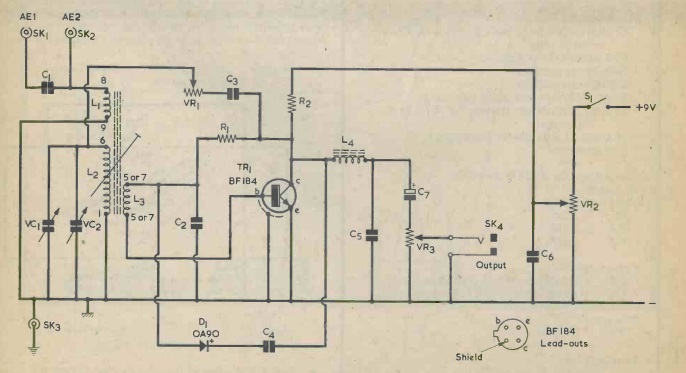 Sixty years ago, this lucky girl was probably one of the first on her block to have her very own transistor radio, thanks to the construction project in the December 1964 issue of Popular Electronics.
Sixty years ago, this lucky girl was probably one of the first on her block to have her very own transistor radio, thanks to the construction project in the December 1964 issue of Popular Electronics.
It was a superheterodyne, and pulled in stations as well or better than most portables on the market. She could even plug it into a phonograph to get loudspeaker volume.
She was able to build it herself, but she had a little secret–most of the work was already done for her. It included a pre-assembled, pre-tuned, sealed IF stage. Other than that, it required only one transistor as the local oscillator, plus a few discrete components.
















